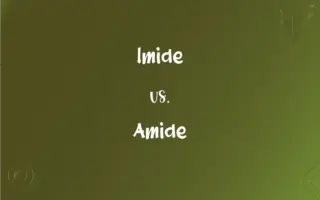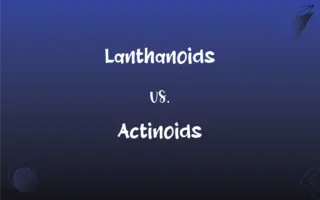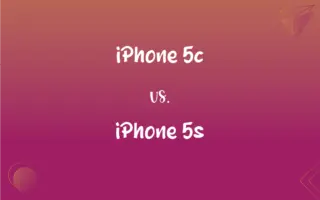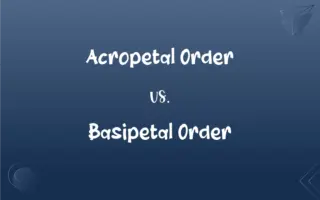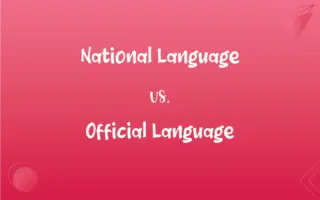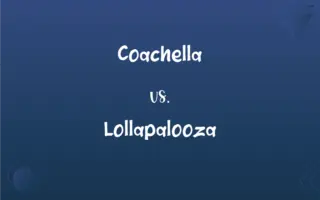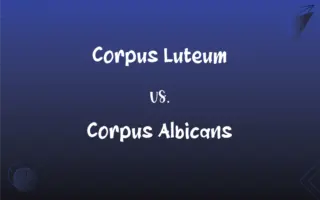Low Beams vs. High Beams: What's the Difference?
Edited by Aimie Carlson || By Harlon Moss || Published on January 1, 2024
Low beams provide moderate, downward-directed light for regular driving, while high beams emit intense, straight-ahead light for better visibility at night or in low-light conditions.
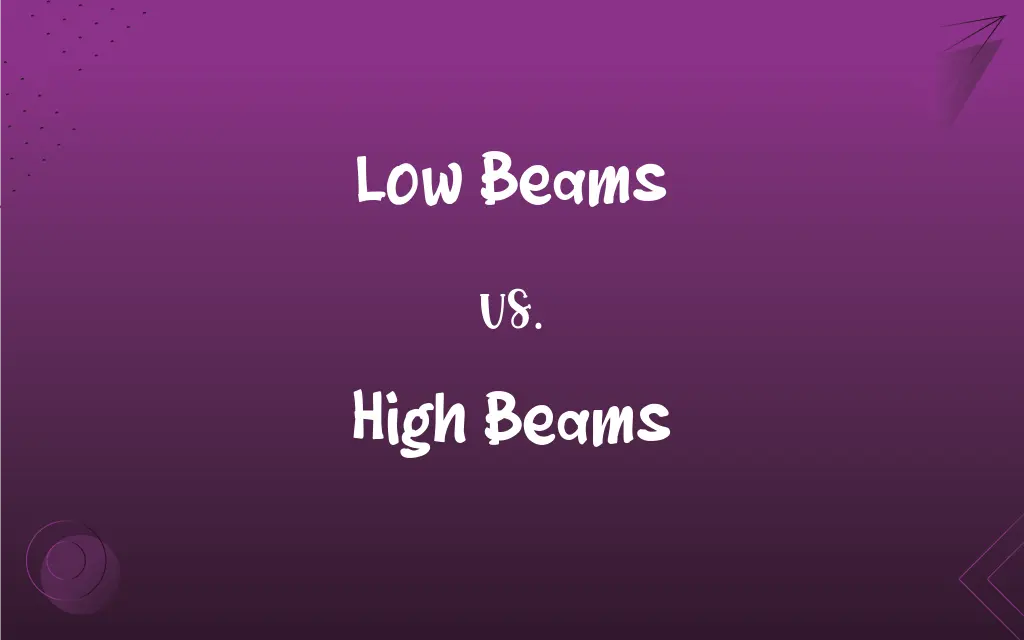
Key Differences
Low beams are designed for everyday driving conditions, offering sufficient illumination without blinding other drivers. High beams are intended for use in poorly lit areas, providing extensive visibility but can dazzle oncoming traffic.
In urban areas with adequate street lighting, low beams are the appropriate choice, ensuring safety and visibility. High beams are more suitable for rural or unlit roads, where greater illumination is necessary.
Low beams cast light downwards, illuminating the road ahead and the sides without causing glare. High beams shine light straight ahead, significantly increasing the driver's range of vision.
When encountering traffic, low beams are necessary to prevent blinding other drivers, a key aspect of road safety. In contrast, high beams are useful on empty roads or in situations with minimal oncoming traffic.
The use of low beams in fog, rain, or snow is recommended as they reduce light reflection and glare. High beams in such conditions can reflect off precipitation, impairing visibility.
ADVERTISEMENT
Comparison Chart
Purpose
Everyday Driving
Improved Visibility in Dark Conditions
Urban vs. Rural Use
Preferred in Urban Areas
Ideal for Rural, Unlit Roads
Direction of Light
Downward
Straight Ahead
Traffic Consideration
Safe for Oncoming Traffic
Not Safe for Oncoming Traffic
Weather Conditions
Better in Fog, Rain, Snow
Can Worsen Visibility in Adverse Weather
ADVERTISEMENT
Low Beams and High Beams Definitions
Low Beams
Low beams are the standard headlights used for typical driving conditions.
In the heavy traffic, she kept her low beams on to avoid dazzling other drivers.
High Beams
High beams are ideal for rural roads with minimal traffic.
On the empty highway at night, high beams were essential for safe driving.
Low Beams
Low beams offer sufficient visibility without blinding oncoming traffic.
During the evening commute, low beams provided enough light to see the road clearly.
High Beams
High beams provide intense, straight-ahead lighting in low-light conditions.
Driving through the foggy forest, he switched to high beams for better visibility.
Low Beams
Low beams provide moderate, directed illumination for regular driving.
He switched to low beams as he entered the well-lit city streets.
High Beams
High beams emit a bright, long-range light for better visibility at night.
On the dark country road, she turned on her high beams to see further ahead.
Low Beams
Low beams cast light downward, reducing glare for other road users.
As the oncoming car approached, he promptly switched to low beams.
High Beams
High beams are used when there are no oncoming vehicles to illuminate distant areas.
He used high beams to navigate the unlit mountain pass safely.
Low Beams
Low beams are essential for safely driving in urban and populated areas.
In the bustling city center, his low beams were more than adequate for visibility.
High Beams
High beams are not suitable when facing oncoming traffic due to glare.
As a car approached, he quickly switched off his high beams to avoid dazzling the driver.
High Beams
Plural of high-beam
FAQs
What are low beams?
Low beams are headlights designed for regular driving conditions.
What are high beams?
High beams are more intense headlights for improved visibility in dark conditions.
When are high beams appropriate?
High beams are best for dark, rural roads or when there's no oncoming traffic.
When should I use low beams?
Use low beams in urban areas, in traffic, and in well-lit conditions.
Do high beams improve visibility in fog?
No, high beams can worsen visibility in fog by reflecting light back.
Are low beams mandatory in city driving?
Yes, low beams are generally required in city driving to avoid dazzling others.
Can I use high beams in heavy traffic?
No, using high beams in heavy traffic can blind other drivers.
Are high beams brighter than low beams?
Yes, high beams are brighter and illuminate farther than low beams.
Can low beams reduce glare?
Yes, low beams reduce glare, making them safe for use around other vehicles.
How do low beams affect oncoming drivers?
Low beams are designed to minimize glare for oncoming drivers.
Do all vehicles have separate low and high beams?
Most vehicles have separate settings for low and high beams.
Do new cars have automatic beam adjustment?
Many new cars feature automatic adjustment between low and high beams.
Can using high beams be illegal?
Improper use of high beams, like blinding other drivers, can be illegal.
How do low beams help in rain?
Low beams reduce reflection and glare, improving visibility in rain.
How do I know which beams to use?
Use low beams in well-lit areas and around traffic; use high beams in dark, empty areas.
What happens if I forget to switch beams?
Forgetting to switch beams can endanger you and others by impairing visibility.
Is it safe to drive with only high beams?
No, it's unsafe and often illegal to drive only with high beams in populated areas.
Should I adjust beams manually?
Some vehicles require manual switching between low and high beams.
Are low beams suitable for all weather conditions?
Low beams are generally better in adverse weather than high beams.
Can I use high beams during the day?
High beams during the day are unnecessary and can distract other drivers.
About Author
Written by
Harlon MossHarlon is a seasoned quality moderator and accomplished content writer for Difference Wiki. An alumnus of the prestigious University of California, he earned his degree in Computer Science. Leveraging his academic background, Harlon brings a meticulous and informed perspective to his work, ensuring content accuracy and excellence.
Edited by
Aimie CarlsonAimie Carlson, holding a master's degree in English literature, is a fervent English language enthusiast. She lends her writing talents to Difference Wiki, a prominent website that specializes in comparisons, offering readers insightful analyses that both captivate and inform.

















































